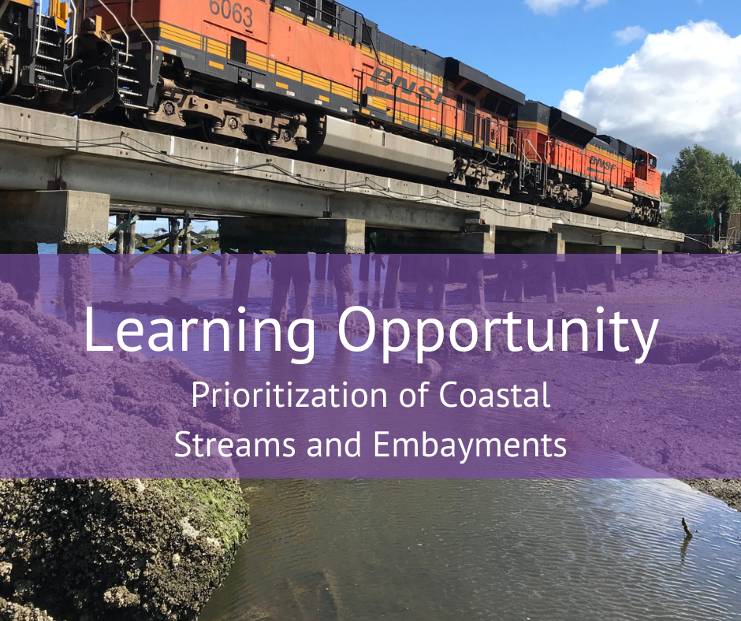This blog was updated on 1/7/20 to include a link to the recording of the webinar.
The Habitat Strategic Initiative hosted a webinar on Thursday, December 5th at 12:30 pm highlighting the results of one of our funded projects, Prioritizing coastal streams and embayments along Puget Sound shores with the railroad. The presentation will describe the results of an effort to identify and assess all coastal stream crossings and embayments associated with the BNSF right-of-way along the eastern shore of the Salish Sea.
The goal of this project was to develop a prioritization framework that evaluates the relative benefit to Chinook salmon of restoring coastal waters impacted by the presence of the railroad on or near the shoreline.

Project Summary
The project team, led by Confluence Environmental Company, in association with technical experts with Environmental Science Associates, Coastal Geologic Services, and the Tulalip Tribes, combined field collected data with available remotely collected data sets. They assembled a geodatabase to contain data for nearly 200 stream mouths that cross the railroad within 200 feet of the marine shoreline as well as 13 embayments.
The project team then developed an evaluation framework which included multiple parameters to characterize the following:
- The likelihood of use by juvenile Chinook salmon, and
- The quality of habitat to support non-natal rearing by juvenile Chinook salmon.
The process generated a prioritization list that can be used to help inform restoration of sites along the railroad right-of-way.
Why this issue is important
The railroad right-of-way is a prominent modification along the eastern shore of Puget Sound. It runs along 52 miles of the shoreline, while another 73 miles of railroad is within 200 feet of the shoreline. In many places, the railroad forms a barrier between the coastal watershed and the shoreline for juvenile Chinook salmon and other salmonids. Because nearshore restoration along the railroad is expensive and requires extensive planning, restoration efforts should be focused on areas that would provide substantial benefits to fish habitat and nearshore processes.

